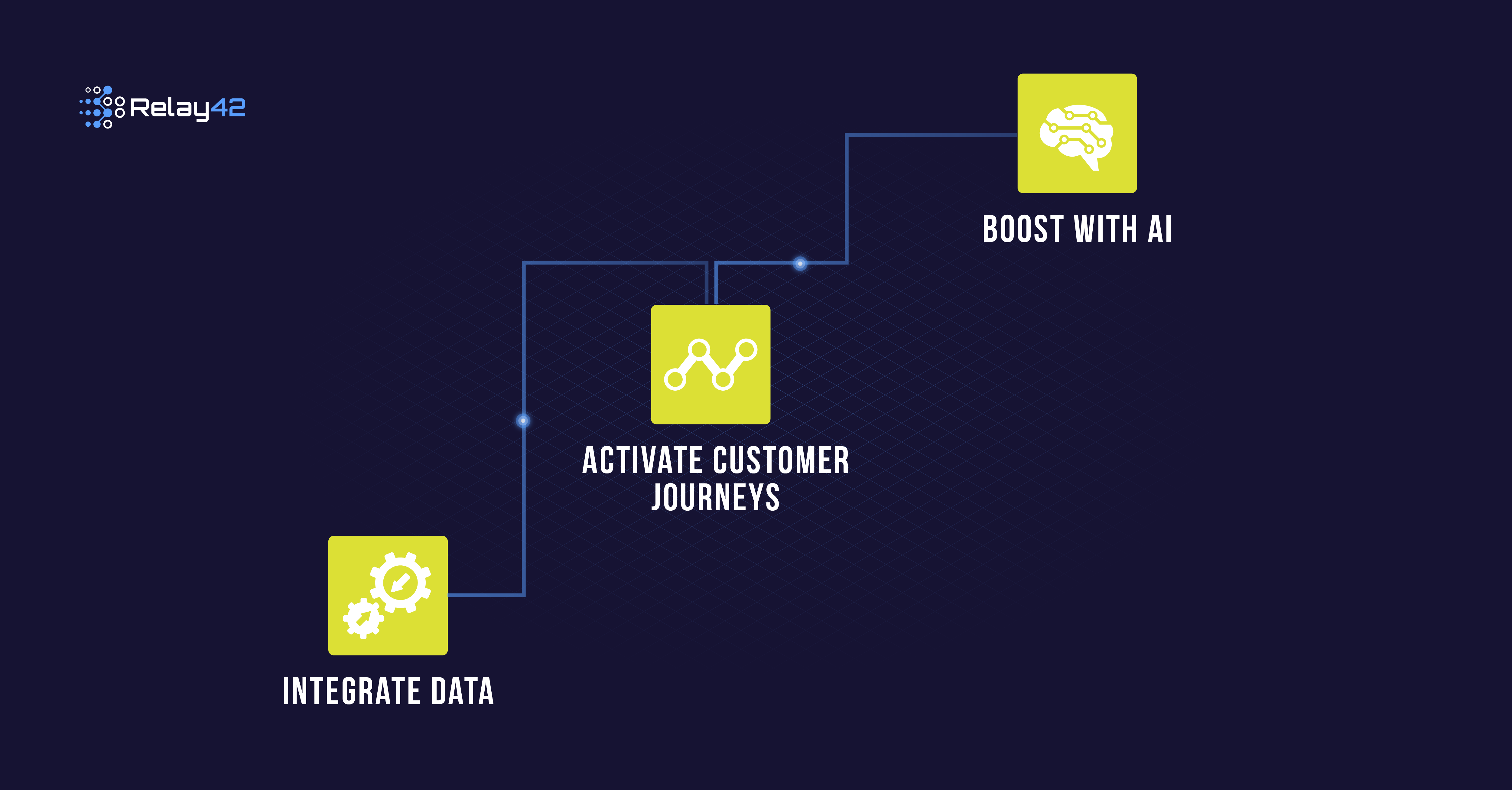BLOG

KPIs (Key Performance Indicators) are there to keep organizations on target. They help us work in a more data-driven way so we can pinpoint what’s going wrong and what’s going right. They also help keep teams and individuals working toward the same goals – and that’s no minor thing. Especially in larger organizations, it’s easy to lose sight of the big picture and focus on the individual tasks and goals.
KPIs also tell us what’s important in our organization: What do we care about? What does success look like for us? And how can we make that measurable?
Main Problem: tracking KPIs in isolation
We’ve noticed something problematic about KPIs, though. Tomas Salfischberger, founder of Relay42, spends a lot of time working with companies who are transforming the way they approach the customer journey. “Just as departments and teams are often organized to tackle specific steps in the customer journey,” says Tomas, “so are KPIs. And that means that as an organization, you are focused on parts of the journey, but not the total picture.”
To give you a better idea of what kind of KPIs are off the mark, we’re giving you 3 examples of misled KPIs and how to redirect them to shift your business focus on the full customer journey.
1. Call center interaction ratings
“We see a lot of inside-out metrics going on in call centers,” says Tomas. “And in many ways, it makes sense. If someone has been in touch with your call center, of course you want to know if they were helped, and the easiest way to do that is to ask them to rate the call center interaction.”
However, this is the wrong KPI, if you ask Tomas. “It’s death by data; you’re asking the wrong question in journey terms. The question shouldn’t be if the customer was happy with the call center interaction. It should be ‘what did we get wrong in their journey that they had to call the call center in the first place?’”
- What did we get wrong?
- How could we have solved it by improving the customer’s journey?
- Should we have offered something proactively?
- Is our website missing key information that would have saved the customer the hassle of calling?
These are the questions people in your organization should be asking about every call that comes into your call center.
In reality, call center interaction surveys (however well-intended they may be) are actively anti-customer-centric. Remember, they just had to go out of their way to call because they couldn’t get the help they needed online, and now they’re being asked to take more time and effort to tell the company whether it’s doing a good job. Set up internal checks to rate the calls rather than burdening customers unnecessarily.
Our advice
Replace this KPI with one that tracks the number of people who called your call center after using digital channels. Dive into the individual journeys and look for places where the journey isn’t smooth and forces customers to get on the phone. It will reduce costs for you and improve your overall customer experience.
2. Banner click-through rates
CTR (click-through rate) is a common metric, and it’s one that makes a lot of sense – you create a banner or a video because you want people to click on it, and in order to know whether that campaign was successful, you measure how many people clicked. Logical. But it’s not 2010 anymore – we have the technology to look past that click and see the entire journey, and that’s what businesses should be doing.
You might be getting a lot of the wrong people clicking on your ads, and if they’re pay-per-click, it’s costing you money.
Our advice
Instead of measuring the number of clicks, you should actually be asking questions about each click:
- What did the journey look like after the click?
- Was the ad relevant for that journey?
- Were there other (more cost effective) ways to deliver this message?
These KPIs will give you the foundation to put together actionable tests and improve multiple touchpoints throughout your customer journey.
3. Marketing reach
10 million people saw your ad or social post; that’s great! But… does it really matter?
Of course brand awareness is important. You want people to know your brand so they’ll turn to you as soon as they need your product or service. But this metric only skims the surface. You know how many people saw your content, but do you know what they did after they saw it? Did they go to your website? Did they go to a competitor website? Did they do something else entirely?
And if they went to your website after seeing whatever it was you meant for them to see, don’t you want to know what they did there?
Our advice
Track impressions if you want, but don’t make this a KPI. It is a performance indicator for that piece of content, but it isn’t key to your overall business goals. This is just one example of the kinds of metrics that might be valuable for individuals to track to measure the impact of their specific work, but that don’t belong in your marketing dashboard.
Transform all of your KPIs to customer-centric metrics
The best place to start is by defining your KPIs from the perspective of your customers and their journey.
Tomas encourages businesses to “Focus on experiences, not individual touchpoints. Consumers are becoming more experience-focused rather than brand-focused. So maybe you’re trying to measure your experience by asking how their call center experience was, but that’s one touchpoint, not the experience – the only way to know if you’re hitting the mark with your customer experience is with data.”
Maximizing the data you already have means unifying it from across all channels and touchpoints. Once you have your data organized, you can look at where customer journeys are going wrong – and where they’re going right. It’s not bad to send out surveys and track clicks and impressions, but always look at how you can make it broader than just one experience or touchpoint.


